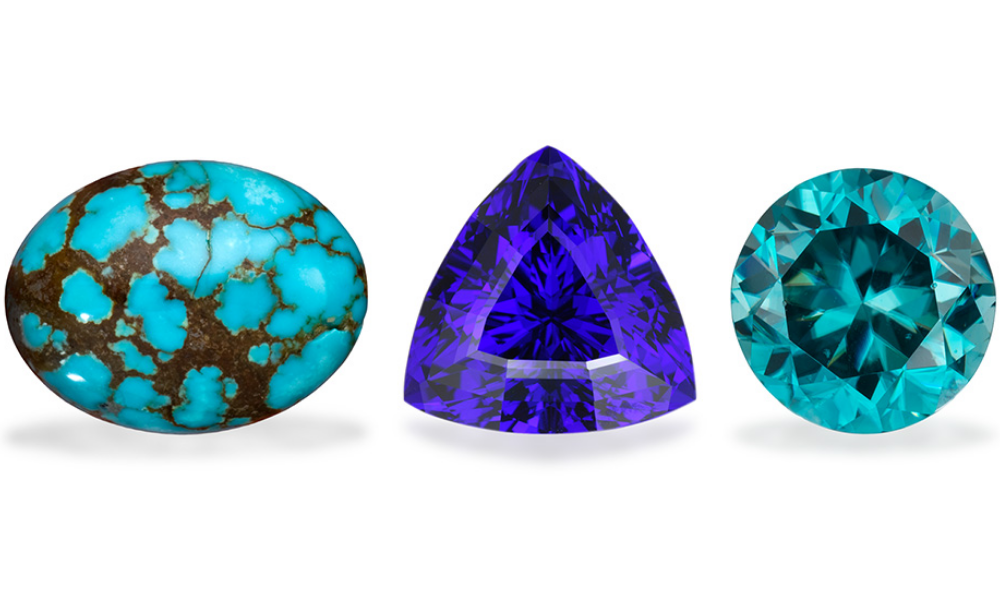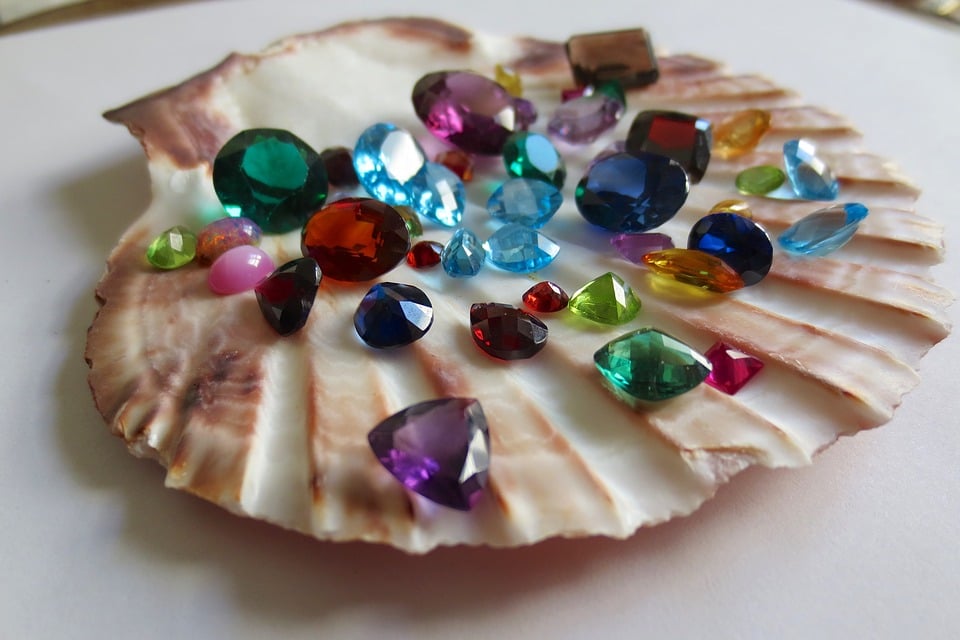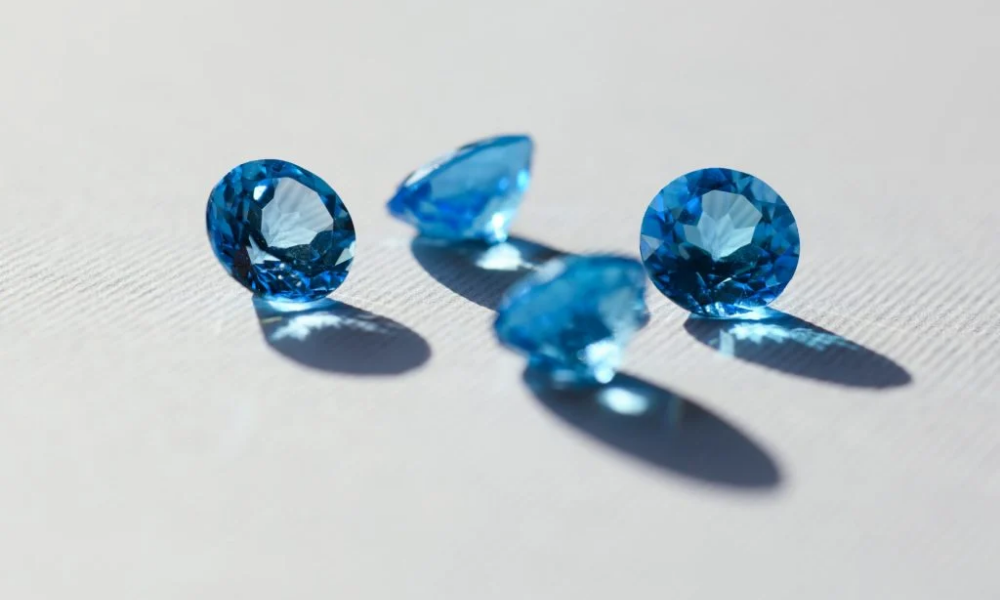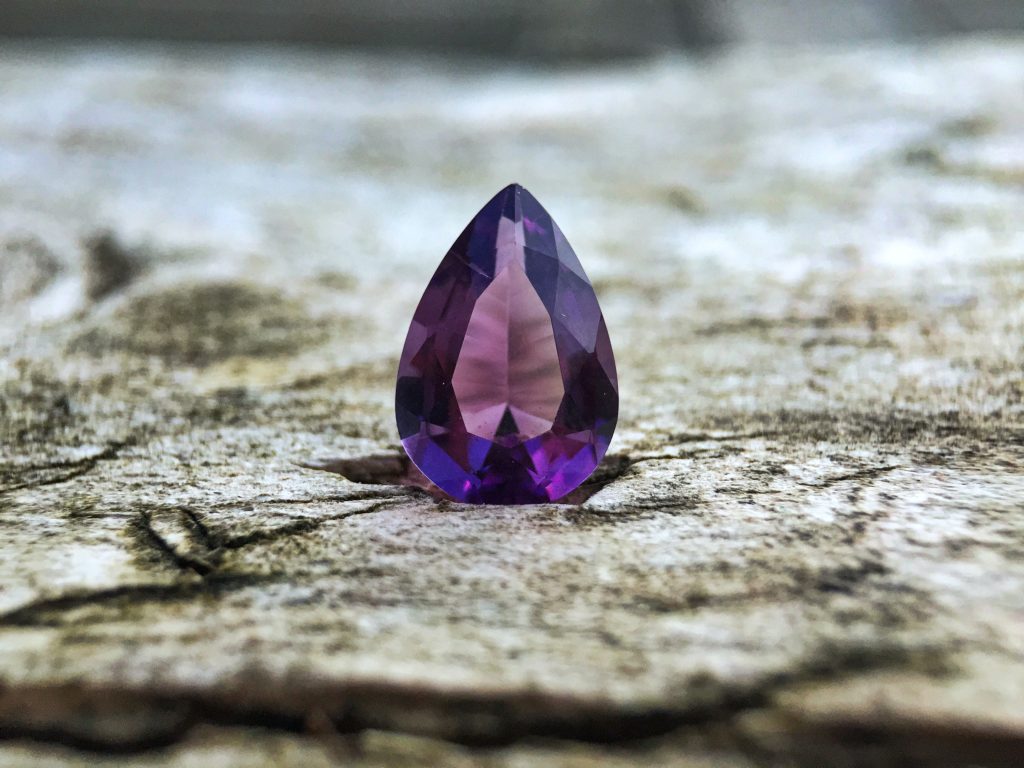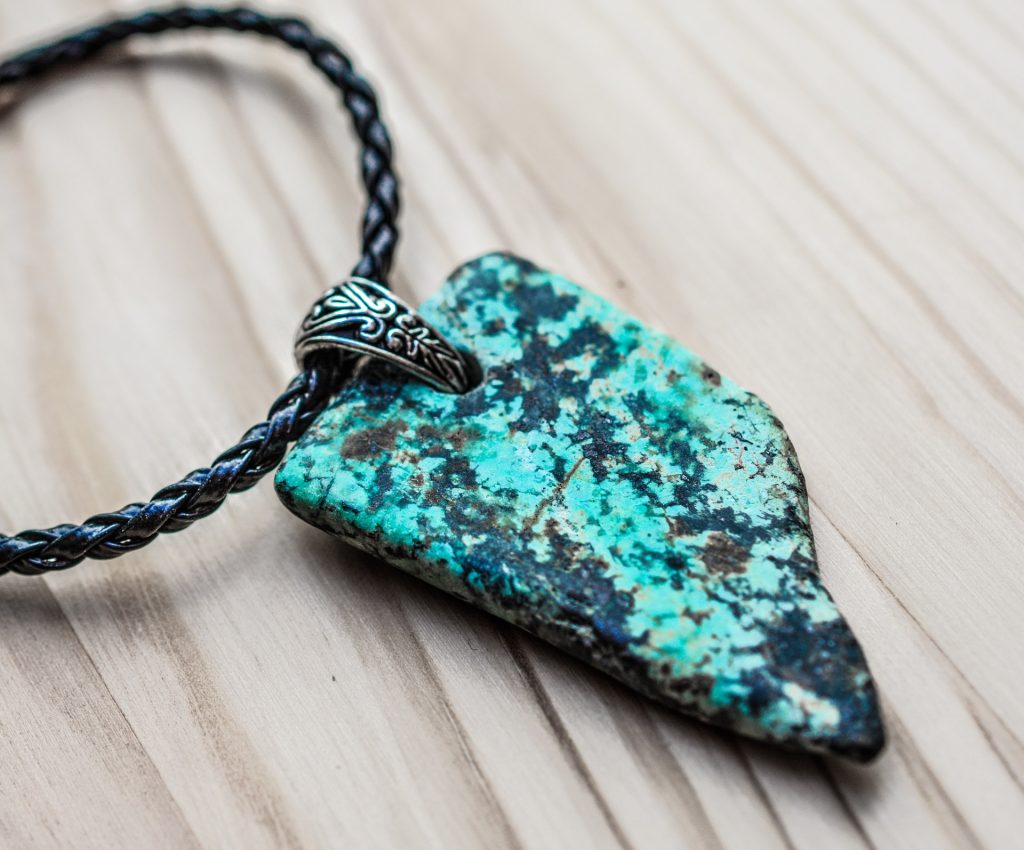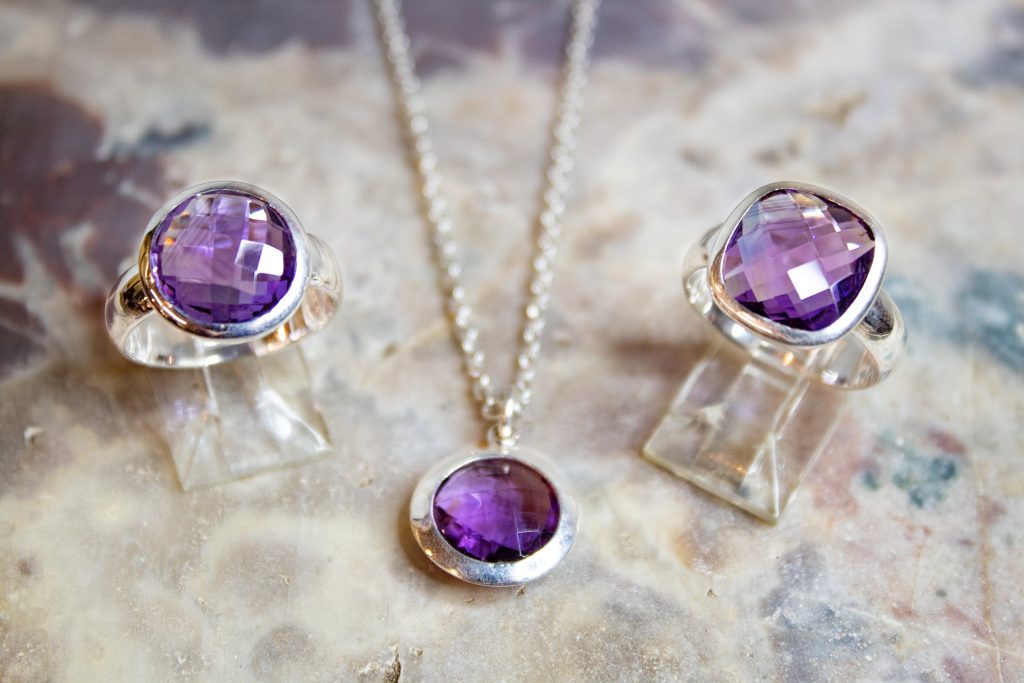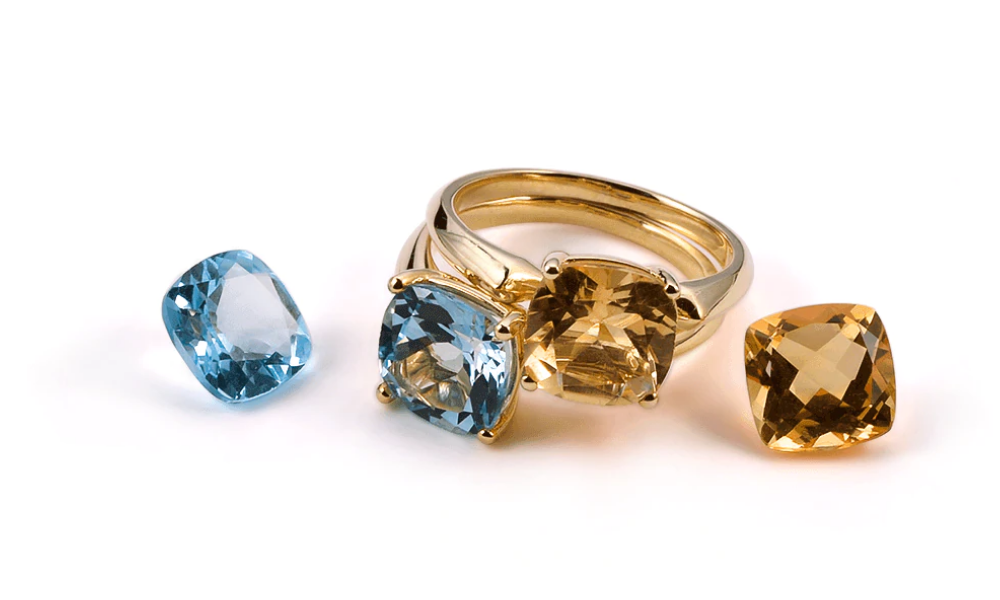Which December birthstones would you choose: Tanzanite, turquoise, or zircon? There’s a color for everyone, from the blue to bluish purple of Tanzanite to the solid blue and green of turquoise to the rainbow variety of zircon. All three December birthstones have their take on the color if you’re looking for a blue birthstone. We can help you choose the perfect December birthstone for you or a loved one, no matter what color, style, or price you have in mind.
The birthstone for December is a combination of three birthstones: turquoise, tanzanite, and zircon, all of which have a rich blue color. The December birthstones bring up visions of fresh, snowy days regardless of the weather. December’s birthstones have a long history, from exquisite turquoise and dazzling Tanzanite to traditional zircon. These jewels are used to create timeless, one-of-a-kind pieces that will impress.
What Is The Birthstone Of December?
It’s not easy to pick the ideal December birthstone for you! Each of these three gemstones has its distinct properties to enhance your jewelry’s style, personality, and quality. Here, you can find the best December birthstones:
Turquoise
Turquoise is the first December birthstone, and it’s a stunning jewel with beautiful veins and vivid blue color. In addition, this December birthstone is opaque rather than transparent, unlike Tanzanite and turquoise. Finally, this birthstone also symbolizes the 11th wedding anniversary.
Turquoise’s History
The word “turquoise” comes from the French phrase Pierre turquoise, which means “turquoise stone” (pronounced pee-yare turr-qwah). Turquoise is thought to have first arrived in Europe via Turkey, which is how this December birthstone received its name.
Turquoise has a long and illustrious history that spans numerous civilizations. Ancient Egyptian pharaohs used turquoise frequently, while Chinese artists sculpted turquoise more than 3000 years ago.
Turquoise has been associated with good health and fortune since the 13th century. In addition, turquoise was worn by horse riders to keep them from falling from their mount. Turquoise also plays a significant role in Native American culture. Somewhat of a jug of gold, the Apache believed that turquoise might be discovered at the end of a rainbow.
Turquoise was also affixed to bows and guns, believing that the gemstone improved accuracy. Turquoise has also played a role in recent history: Wallis Simpson, Duchess of Windsor, was famed for wearing a Cartier amethyst and turquoise necklace.
What Is The Origin Of Turquoise?
Turquoise has been mined in Iran’s Nishapur area for more than 1000 years. This turquoise is treasured for its distinctive color, described as robin’s egg blue, sky blue, or Persian blue. New Mexico has been the leading producer of turquoise in the United States. However, most December birthstone mining is now done in Arizona and Nevada. The Hubei Province in central China is now the world’s largest producer of turquoise.
Care & Maintenance
Turquoise is a porous gem with a Mohs hardness of 5 to 6. As a result, resin or acrylic epoxy can be used to cure this December birthstone. This increases the strength and color of turquoise. In addition, any flaws in turquoise can be filled with a metal-loaded epoxy. This method produces a marbling effect comparable to that of turquoise.
The color turquoise is usually unaffected by light. However, when exposed to extreme heat regularly, the gemstone can tarnish. So only use warm water and mild soap to clean your stone. This way, you’ll be able to wear your turquoise jewelry for a long time!
Tanzanite
Tanzanite is a beautiful gemstone. Its silky tones fluctuate with the light, ranging from vivid blue to violet. This December birthstone also commemorates the 24th wedding anniversary.
To remove the reddish tint present in natural Tanzanite, most crystals used in jewelry were heated. The result is jewels that are more vividly blue and violet. In rare instances, heated stones can produce a green gem with secondary blue and violet colors. Cutters can impact the overall color of cut gems by the way they craft them.
Tanzanite’s Roots
Tanzanite is a very new birthstone. Maasai herdsmen discovered blue stones near Arusha, Tanzania, in 1967. They informed prospector Manuel d’Souza, who promptly began mining what appeared to be sapphires.
D’Souza eventually recognized the stones as mineral zoisite rather than sapphires.
Tiffany & Co. started an ad campaign about the mineral zoisite a year later. They positioned the gemstone as a rival to the more expensive sapphire. In addition, the birthstone’s exceptional clarity, rich color, and potential for massive cuts were promoted. Tiffany & Co. swiftly became the principal distributor of Tanzanite. The bluestone was dubbed “tanzanite.” However, Tiffany & Co. thought “tanzanite” was a better name from a marketing standpoint.
What Is The Source Of Tanzanite?
The Merelani Hills in northern Tanzania is the only area where Tanzanite is mined. The mines are located in the shadow of Africa’s largest mountain, Mount Kilimanjaro.
According to a 2012 study, the tanzanite supply is depleting. Block C, the most significant part of mining land in the Merelani Hills, could be depleted in as little as 30 years. The price of Tanzanite increased as a result of this. According to several experts, the current generation will be the last to buy new Tanzanites.
Although it is not impervious to it, Tanzanite is slightly more resistant to damage than turquoise. So instead of rings and bracelets, choose tanzanite earrings or pendants to extend the life of your Tanzanite. A tanzanite stone set in a protective setting, on the other hand, can form a gorgeous event ring.
Tanzanite appears brown, yellowish-green, blue, and violet in its natural state, flashing these hues when viewed from different angles. Pleochroism is a phenomenon in which multiple hues are visible depending on how light strikes the gemstone. The type of lighting used might also have an impact. For example, Tanzanite appears bluer under fluorescent lights but more violet under incandescent light.
Cleaning & Maintenance
Tanzanite has a Mohs hardness of 6 to 7 and is resistant to light, heat, and common chemicals. However, if exposed to excessive heat or rapid temperature changes this December, the gemstone may fracture. Clean your stone with warm water and soft soap, just like turquoise.
Zircon
Zircon is a dazzling and underappreciated gemstone with a long and illustrious history. This December birthstone has historical significance in geology and culture because of its historical significance.
To the naked eye, zircon appears to be similar to other gems. Cubic zirconia, a lab-grown diamond simulant, is frequently confused with zircon. Because of its brilliance, the colorless zircon appears to the naked eye to be a diamond. This might give the impression that the birthstone has twice as many facets.
Zircon’s History
Zircon is the world’s oldest mineral, dating back 4.4 billion years.
Because zircon depicts pressure variations and erosion alterations across the earth’s history, it gives us a glimpse into the past. But unfortunately, it’s unknown where the word “zircon” came from. The name could be derived from the Arabic words zakrun (which means “cinnabar” or “vermillion”) or zargun (which means “gold-covered”).
During the Middle Ages, many people believed that zircon might help with health problems like blisters, sores, and varicose veins by inducing sleep, warding off evil spirits while sleeping, and helping with physical problems like blisters, sores, and varicose veins.
The navaratna, a jeweled pendant representing the Hindu religion’s heavenly bodies, contains nine jewels, one of which is the December birthstone. This strong talisman repels evil energy, promotes good health, and increases the protective and beneficial properties of each of the nine jewels.
In more recent history, during the Victorian era of the 1880s, the English developed a love for zircon. As a result, shades of zircon can be found in many estate pieces from the period. While in mourning, cloudy or smoky zircon was also a popular choice for jewelry.
What Is The Origin Of Blue Zircon?
Elahera, Sri Lanka, has a thriving zircon mining industry. Sri Lanka, popularly known as the Gem Island, produces sapphires in blue, yellow, and pink hues and hessonite garnet, tourmaline, moonstone, quartz, and other gemstones.
The Harts Range in Australia also mines a lot of zircon, with yellow-brown, orangy-brown, pink, and purple zircon being the most common. In Australia, the birthstone for December is Zircon Hill. Australia is the world’s leading producer of zircon, accounting for 37% of all zircon gemstones mined today.
Because the two stones develop near each other, mining companies frequently produce zircon and sapphire in the same areas. As a result, zircon and sapphires are found in Myanmar, Vietnam, Cambodia, Sri Lanka, and Australia.
The Most Frequently Used Zircon Jewelry Settings
While zircon comes in various colors, blue is the most popular because it is the birthstone for December. Because of its strength, zircon is ideal for everyday use as earrings, rings, necklaces, and other jewelry. When wearing zircon as a ring, jewelers recommend a protective setting, the same as they do with Tanzanite. Since rings are subjected to more wear and tear than earrings and necklaces.
Cleaning & Maintenance
Zircon has a Mohs hardness of 6.5 to 7.5 and is commonly heat-treated to produce varied blue and colorless colors. When exposed to light and heat, zircon remains stable. However, these factors can cause some gemstones to revert to their natural color. Like turquoise and Tanzanite, the December birthstone is scratchable and should only be cleaned with a gentle brush or warm, soapy water.
What Are Gemstones Grown In A Lab?
Lab-grown gemstones are a more ethical and environmentally friendly option than natural stones. Aside from the peace of mind that comes with knowing where your stone came from, lab-grown gemstones are far less expensive than natural stones. The creation of lab-grown gemstones is similar to that of natural gemstones. However, labs can now duplicate the earth’s temperature and pressure to create ethical and beautiful stones. The chemical composition of lab-grown gemstones is identical to that of genuine gemstones; the difference can’t be seen with the naked eye.
A Note On December Birthstone Shade
Turquoise, unlike many other gems, is opaque rather than translucent.
Its blue-green hues range from sky blue to greenish-blue to pale green to greenish-grey. The bluer the stone, the more expensive it is, and the more copper it contains. Turquoise can be crisscrossed by a “matrix,” which is a pattern of mineral lines generated by the surrounding stone and can lower the stone’s value.
Forces have acted within zirconium silicate crystals to modify their molecular structure and color over enormous geologic periods. Radiation from uranium and thorium inclusions changes the crystal structure. Colors ranging from red through brown, orange, and yellow are created in a glass-like substance. Green is the most uncommon of all the natural colors. Most gemstones have been heating treated to bring out their colors since the 1920s. Colorless zircons, as well as blue and yellow stones, result from this process.
Green zircon was one of the Hindu religion’s Kalpa Tree stones, representing the tree’s foliage. This tree served as a religious sacrifice to the gods. It was described as part of a gleaming ensemble of precious stones that comprised sapphires, diamonds, and topaz by Hindu writers in the nineteenth century.
Hyacinth and jacinth, two reddish-brown and orange-red zircon variants were popular among ancient Arabs and featured in the famous “Arabian Nights.”
Zircon was famous for protecting against the Black Death, the horrific plague that took off a fourth of Europe’s population in the 14th century. In addition, people believed the stone had therapeutic properties, such as inducing sleep, acting as a poison antidote, and improving digestion.
Conclusion
The birthstones for December are very affordable, but their beauty rivals that of priceless diamonds. Colorless zircon is a compelling alternative for diamond, Tanzanite is frequently used in place of sapphire, and turquoise’s robin’s egg blue color is unrivaled. Tanzanite is a rare blue-purple variant of the mineral zoisite found only in one location on the planet. Because of their similar names and use as diamond simulants, zircon and synthetic cubic zirconia are frequently mistaken. Turquoise has been prized since ancient times for its distinctive color, ranging from powdered blue to a greenish robin’s egg blue.


